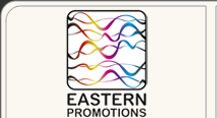georgian version
MMW BIOGRAPHY
A group that effortlessly straddles the gap between avant-garde improvisation and accessible groove-based jazz, Medeski, Martin, & Wood have simultaneously earned standings as relentlessly innovative musicians and an enormously popular act. Emerging out of the New York downtown scene in the early '90s, the group soon set out on endless cross-country tours before returning home to Manhattan to further refine their sound through myriad influential experimentations.
Each of the musicians -- keyboardist John Medeski, drummer/percussionist Billy Martin, and bassist Chris Wood -- crossed paths throughout the '80s, playing with the likes of John Lurie, John Zorn, and Martin mentor Bob Moses. In 1991, the trio officially convened for an engagement at New York's Village Gate. Soon, the group was rehearsing in Martin's loft, writing, and soon recording 1992's self-released Notes from the Underground. As the group began to tour, escaping the supportive, though insular, New York music community, Medeski -- a former child prodigy -- switched to a Hammond B-3 organ, an instrument far easier to travel with than a grand piano.
Grammavision released It's a Jungle in Here in 1993, which featured horn arrangements by future Sex Mob founder (and pan-scenester) Steven Bernstein. The medley of Thelonius Monk's "Bemsha Swing" and Bob Marley's "Lively Up Yourself" spoke volumes about what the band was attempting to accomplish. Friday Afternoon in the Universe, widely considered the band's breakthrough record, further continued the push toward groove-oriented accessibility, a movement which peaked with the group's 1996 Rykodisc debut, Shack-man (recorded entirely in the band's practice shack in the Maui jungle). By 1996, through a combination of endless touring and two widely circulated live collaborations with Phish, the group caught in the burgeoning jam band scene, where they continue to draw the bulk of their audience outside of New York.
Late in 1996, the group began a public return their avant-garde roots, hosting a series of weekly "Shack Parties" at New York's Knitting Factory, which featured collaborations with many musicians, including Vernon Reid and DJ Logic; the latter would soon become the group's unofficial fourth member. The trio issued the extremely free (and utterly beautiful) Farmer's Reserve on their own Indirecto imprint in 1997, a series of improvisations recorded at the Shack. Logic soon joined the band on the road, and they prepared to record Combustication, their first effort for Blue Note, as well as their first full-length collaboration with producer Scott Harding.
In 2000, the band made their coming-out as leaders with two releases -- the live acoustic Tonic (recorded at the New York City club of the same name), as well as the electric The Dropper (recorded at the band's newly christened Shacklyn Studios in the trendy DUMBO neighborhood of Brooklyn) -- as well as an acclaimed Halloween performance at Manhattan's Beacon Theater. The Dropper featured Harding's gritty production, as well as appearances by Sun Ra alum Marshall Allen. In 2006, the group released Out Louder, an album that saw them collaborate with John Scofield. Their music was also featured on Grey's Anatomy. Radiolarians 1, the first of three loosely linked albums, appeared in the fall of 2008 on the group's own Indirecto Records imprint. Radiolarians 2 followed a year later. The band's reputation has achieved massive proportions. As they always have, the three core bandmembers contributed to numerous other recording projects, both as sidemen and leaders. Increasingly, their word was gold and their efforts carved paths for musicians to follow. Following their rise, for example, was a renaissance in B-3-based organ trios. Many groups had played with DJs before them, but their performances with Logic made it downright fashionable. Though they were -- and are -- considered "alternative" jazz, they were drawing larger audiences than many of their mainstream counterparts. |

